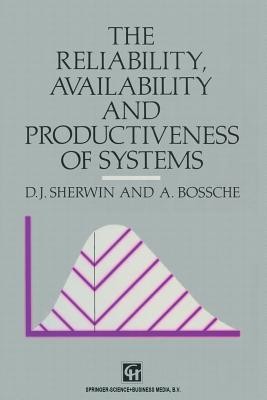
- We will send in 10–14 business days.
- Author: D J Sherwin
- Publisher: Springer
- Year: 2012
- Pages: 270
- ISBN-10: 9401046883
- ISBN-13: 9789401046886
- Format: 15.6 x 23.4 x 1.5 cm, softcover
- Language: English
- SAVE -10% with code: EXTRA
The Reliability, Availability and Productiveness of Systems (e-book) (used book) | bookbook.eu
Reviews
Description
This book is about the measurement and prediction of the reliability behaviour of systems of physical items. It is not specifically concerned with human factors with safety analysis as such, although some of the techniques discussed are adaptable to these purposes. A machine or an electronic circuit exemplifies a system. Each machine or circuit may also be treated as an item in a larger system. However, this does not reduce it suddenly to basic component status; it remains complex and can only be treated as unitary under definable restrictions. In particular, the effects of maintenance and component renewal must be considered most carefully. Previous books on system reliability have concentrated on one or two only of the six principal techniques available to the analyst. These are: 1. probability theory; 2. distributional statistics; 3. markov methods (matrix algebra); 4. fault and event trees (Boolean logic); 5. theory of renewal processes; 6. directional graph theory (di-graphs). This book relates these methods to one another and to their applications. The authors feel that previous books which concentrated upon one tech- nique and the contortions necessary to use it in every possible situation may have misled readers into believing that there were no other methods and that some real problems were intractable or more difficult to solve than need be. For example, several results which are proved in other books for items with exponentially distributed times to/between failures are shown to be independent of distribution.
EXTRA 10 % discount with code: EXTRA
The promotion ends in 19d.17:11:09
The discount code is valid when purchasing from 10 €. Discounts do not stack.
- Author: D J Sherwin
- Publisher: Springer
- Year: 2012
- Pages: 270
- ISBN-10: 9401046883
- ISBN-13: 9789401046886
- Format: 15.6 x 23.4 x 1.5 cm, softcover
- Language: English English
This book is about the measurement and prediction of the reliability behaviour of systems of physical items. It is not specifically concerned with human factors with safety analysis as such, although some of the techniques discussed are adaptable to these purposes. A machine or an electronic circuit exemplifies a system. Each machine or circuit may also be treated as an item in a larger system. However, this does not reduce it suddenly to basic component status; it remains complex and can only be treated as unitary under definable restrictions. In particular, the effects of maintenance and component renewal must be considered most carefully. Previous books on system reliability have concentrated on one or two only of the six principal techniques available to the analyst. These are: 1. probability theory; 2. distributional statistics; 3. markov methods (matrix algebra); 4. fault and event trees (Boolean logic); 5. theory of renewal processes; 6. directional graph theory (di-graphs). This book relates these methods to one another and to their applications. The authors feel that previous books which concentrated upon one tech- nique and the contortions necessary to use it in every possible situation may have misled readers into believing that there were no other methods and that some real problems were intractable or more difficult to solve than need be. For example, several results which are proved in other books for items with exponentially distributed times to/between failures are shown to be independent of distribution.


Reviews